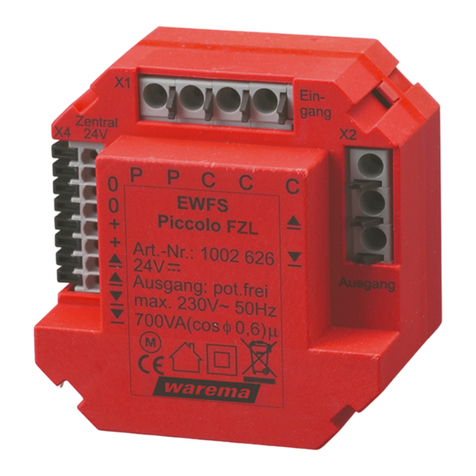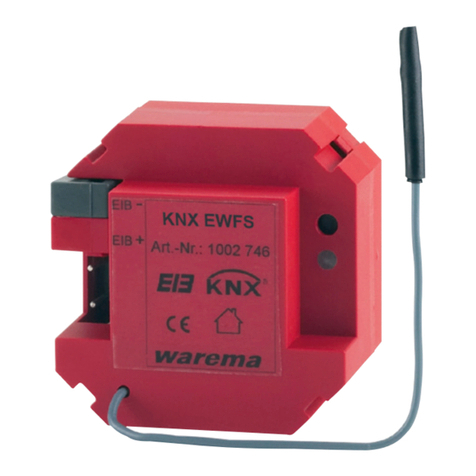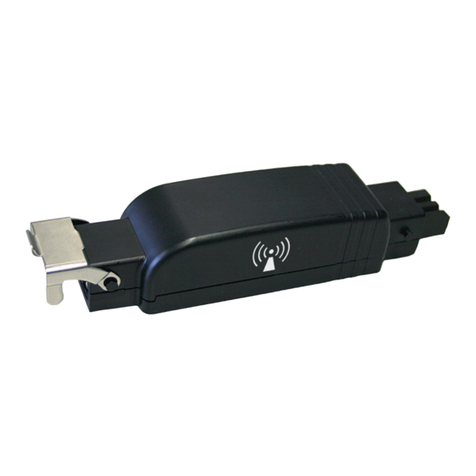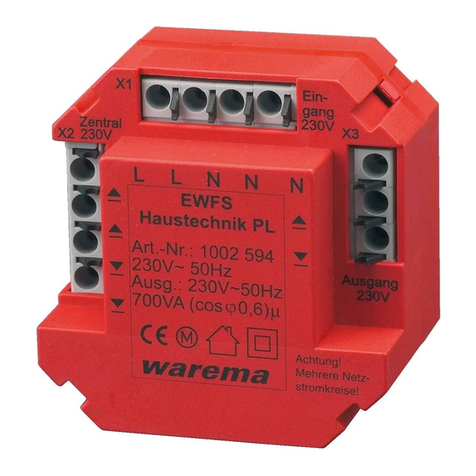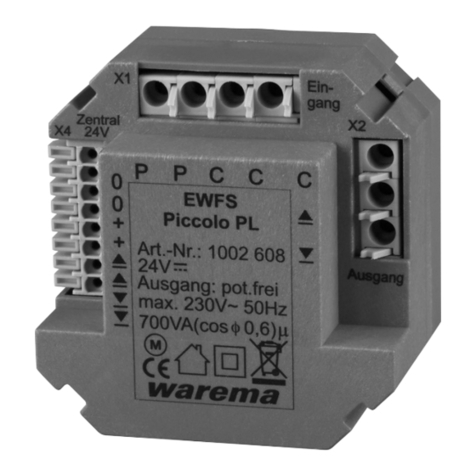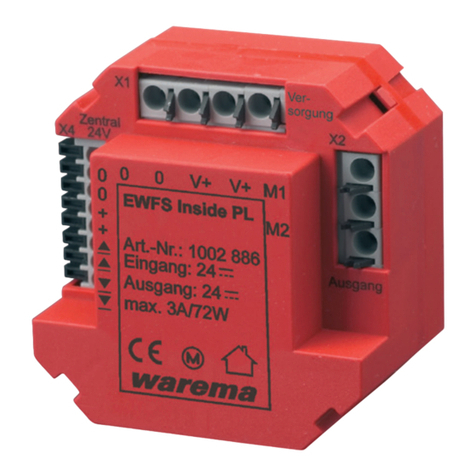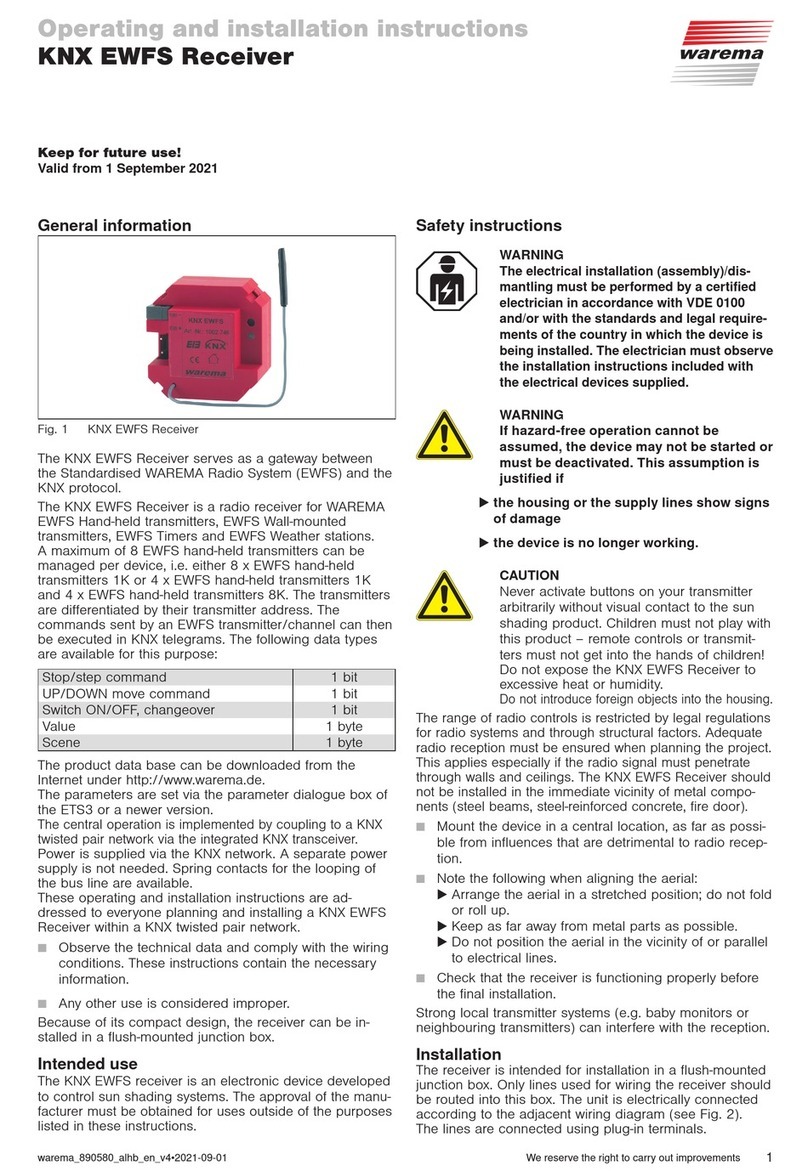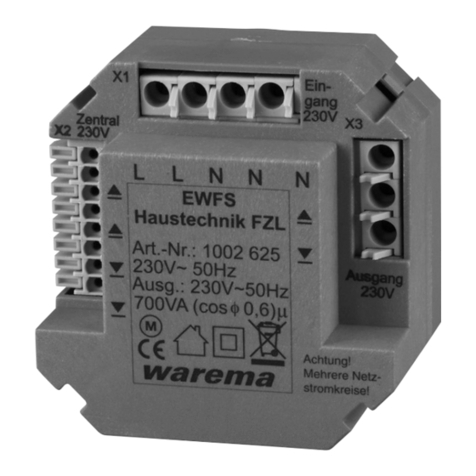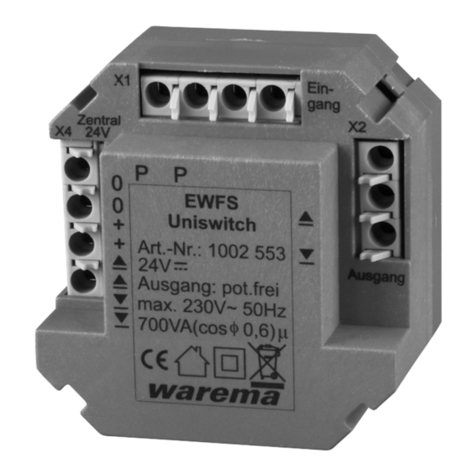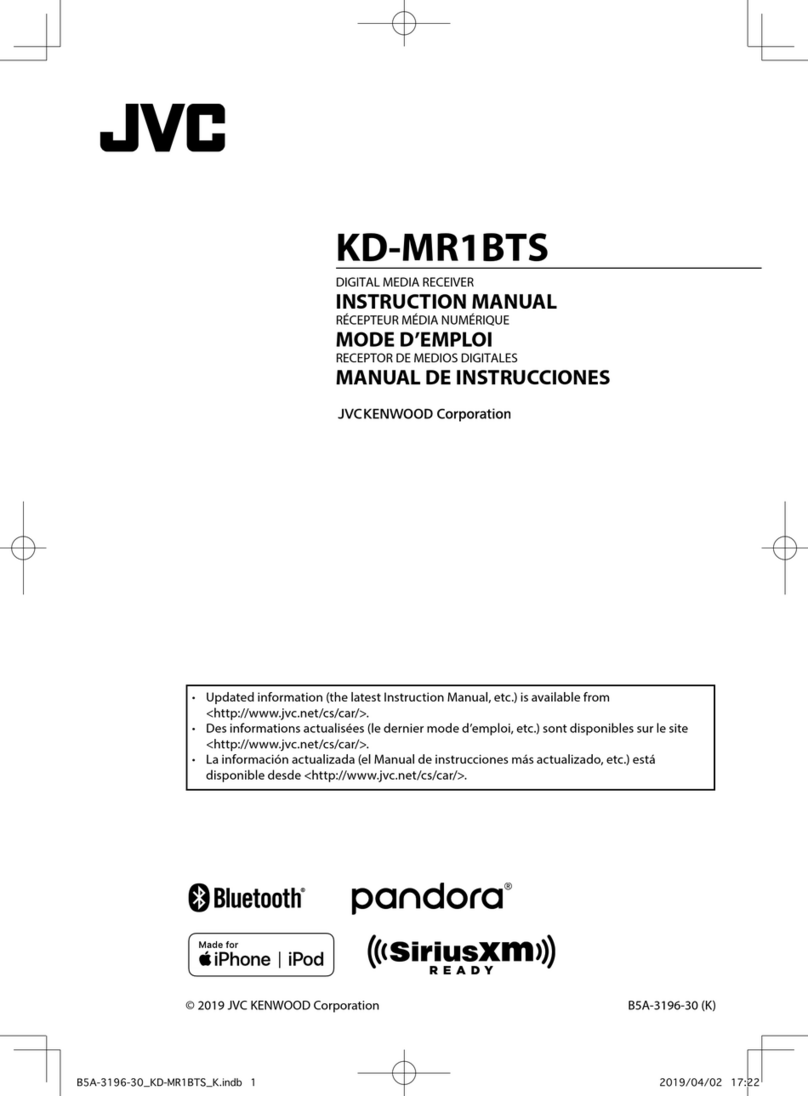
warema_2035334_alhb_en_v1•2021-09-01We reserve the right to make technical modifications
2
that you first select the desired channel, as the following
example shows:
How to learn channel 1 of an 8-channel hand-held
transmitter into a receiver:
Put receiver in learn mode:
Perform the power-up pro-
cedure on the receiver.
Learn in the transmitter:
Take the transmitter, select
channel 1, press and hold
the learn button, the lamp
lights up, release the button.
Result:The receiver can now be operated with channel 1
of the transmitter.
Building a group
You would like to operate two lamps with an 8-channel
hand-held transmitter (I) as follows:
Channel1 controls lamp1 (master channel)
Channel2 controls lamp2 (master channel)
Channel3 controls both lamps together (auxiliary channel).
1
ΙΙ Ι
2
3
= Master channel = Auxiliary channel
1212
Fig. 2 Building a group
1st step: Learn in the master channel
One master channel must be learned into each receiver
before you can build a group. As described in the section
"Learning in the master channel", learn in channel 1 on
receiver 1 as a master channel and channel 2 on receiver
2 as a master channel.
If this is not possible because the power-up pro-
cedure cannot be performed separately for the
receivers, the master channels must be learned in
by means of "smart learning". For this purpose the
"EWFS Applications brochure" is available at:
https://warema.com/media/866089.pdf.
2nd step: Learn in the auxiliary channel
You can now operate the lamps separately, and each
learned channel is a master channel in the respective
receiver. If the learn button is pushed with this master
channel, the learn mode can be started and an auxiliary
channel learned into the respective receiver even without
the power-up procedure. If the same auxiliary channel, e.g.
channel 3, is now learned into each receiver, both lamps
can later be operated as a group with channel 3 but they
can still be operated separately via the master channels 1
and 2. The next step is to learn in the auxiliary channels:
Learning lamp 1 into channel 3
Place receiver1 into learn
mode: Select channel1,
press and hold the learn
button, lamp1 lights up,
release the button.
Learning in channel 3 as the
auxiliary channel: Select
channel 3. Press and hold
the learn button, lamp 1
lights up, release the button.
Channel 3 is now an auxilia-
ry channel for lamp 1.
1
Ι
1
Ι
3
Ι
Close learn mode: Select
channel1, button "B".
Result:Lamp1 now can also be operated with channel3.
Learning lamp 2 into channel 3
Place receiver2 into learn
mode: Select channel2,
press and hold the learn
button, lamp2 lights up,
release the button.
Learn in channel3 as an aux-
iliary channel: Select chan-
nel3, press and hold the
learn button, lamp2 lights
up, release the button.
Channel 3 is now an auxil-
iary channel for lamp 2.
Close learn mode: Select
channel2, press button "B".
Result:Lamp2 now can also be operated with channel3.
Deleting an auxiliary channel
You can delete all auxiliary channels learned into the
receiver if you made a mistake and want to start over
again. See the following example:
1
ΙΙ Ι
2
3
= Master channel = Auxiliary channel
1212
Fig. 3 Auxiliary channels in receiver 1 and 2 are to be deleted.
Carry out the following operation steps in succession
with the respective master channel:
Delete all auxiliary channels
in receiver 1: Select master
channel 1, press the learn
button and hold it for at
least 20 seconds; the lamp
lights up twice and then
stays off!
End the procedure: Select
channel1, press button "B".
Delete all auxiliary channels
in receiver 2: Select channel
2, push the learn button
and hold it for at least 20
seconds; the lamp lights up
twice and then stays off!
End the procedure: Select
master channel 2, press
button "B".
Result:All auxiliary channels in receiver1 and receiver2
were deleted.
Only one master channel and another 15 auxiliary
channels can be learned into each receiver. The
master channel cannot be deleted but can only
be overwritten with a new channel. The auxiliary
channels are not deleted when you learn in a new
master channel.
1
Ι
B
2
Ι
3
Ι
2
Ι
B
1
Ι
1
Ι
B
2
Ι
2
Ι
B
